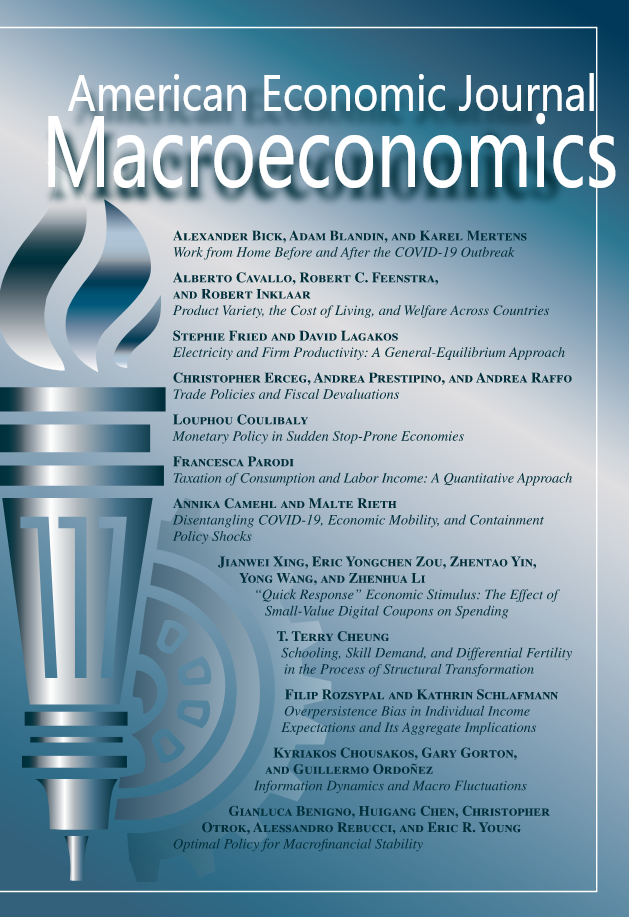资本再分配摩擦和贸易冲击
IF 5.7
1区 经济学
Q1 ECONOMICS
引用次数: 0
摘要
进口竞争冲击对资本再配置和总生产率的短期影响是什么?为了解决这个问题,我们建立了一个包含异质性企业和资本重新配置摩擦的定量模型。我们用秘鲁制造业企业的投资动态和中国与秘鲁之间的贸易流动的微观数据来约束模型。由于企业缩减规模和退出过程中存在较大的摩擦,进口竞争冲击会由于投资不作为和一些生产性企业的退出而导致暂时的总生产率损失和边际产品的更大分散。贸易冲击对资本再配置影响的实证支持了模型机制。(jel e22, e23, f14, l60, o14, o16, o19)本文章由计算机程序翻译,如有差异,请以英文原文为准。
Capital-Reallocation Frictions and Trade Shocks
What are the short-term effects of an import-competition shock on capital reallocation and aggregate productivity? To address this question, we develop a quantitative model with heterogeneous firms and capital-reallocation frictions. We discipline the model with micro data on investment dynamics of Peruvian manufacturing firms and trade flows between China and Peru. Because of large frictions in firm downsizing and exit, an import-competition shock induces a temporary aggregate-productivity loss and larger dispersion in marginal products, due to investment inaction and exit of some productive firms. Empirical evidence on the effects of trade shocks on capital reallocation supports the model mechanism. (JEL E22, E23, F14, L60, O14, O16, O19)
求助全文
通过发布文献求助,成功后即可免费获取论文全文。
去求助
来源期刊

American Economic Journal-Macroeconomics
ECONOMICS-
CiteScore
8.20
自引率
1.70%
发文量
58
期刊介绍:
American Economic Journal: Macroeconomics focuses on studies of aggregate fluctuations and growth, and the role of policy in that context. Such studies often borrow from and interact with research in other fields, such as monetary theory, industrial organization, finance, labor economics, political economy, public finance, international economics, and development economics. To the extent that they make a contribution to macroeconomics, papers in these fields are also welcome.
 求助内容:
求助内容: 应助结果提醒方式:
应助结果提醒方式:


